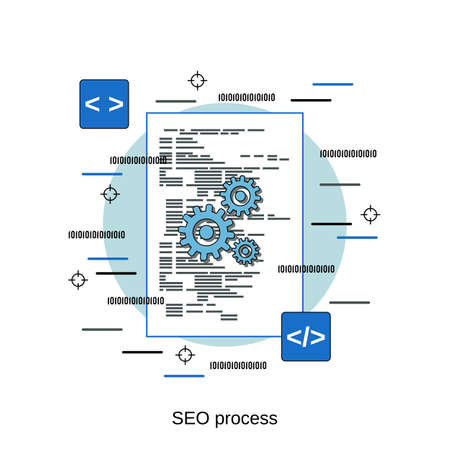Understanding the British Digital Market Landscape
To build content strategies that deliver SEO success within British industries, it is essential to begin with a nuanced understanding of the UK’s digital market landscape. The United Kingdom, with its rich regional diversity and evolving consumer expectations, presents unique challenges and opportunities for brands aiming to capture local search intent.
Distinctive Characteristics of UK Audiences
British audiences are known for their pragmatic approach to information consumption. Consumers in the UK tend to value transparency, reliability, and a balanced tone in content presentation. Regional variations—from the cosmopolitan attitudes in London to the distinctly local preferences in Scotland, Wales, and Northern Ireland—shape user expectations and search behaviours. For instance, English audiences may prioritise convenience and value-for-money, while Scottish consumers might respond more positively to heritage-led narratives.
Regional Consumer Behaviours Impacting Content Strategy
The importance of regionality cannot be overstated when structuring content for British industries. Search queries often include geographic modifiers such as “near me,” “in Manchester,” or “London-based.” As such, aligning your content structure with localised keywords, references to regional trends, and contextually relevant case studies can significantly boost visibility in SERPs tailored for UK users.
Industry-Specific Considerations
Certain sectors—such as financial services, healthcare, and retail—exhibit particularly stringent regulatory and cultural requirements in the UK. For example, financial content must adhere to FCA guidelines, while healthcare information should reference the NHS and other reputable British authorities. Recognising these nuances enables brands to create trustworthy content that resonates with both users and search engines.
Ultimately, effective content structuring for SEO in Britain hinges on analysing consumer behaviour data at a regional level and integrating those insights into every stage of content planning and optimisation. This foundational understanding paves the way for tactical decisions that enhance organic visibility and drive engagement across competitive British markets.
2. Structuring Content for British Readability and Engagement
When targeting British audiences, the structure of your content plays a vital role in maximising both SEO performance and user engagement. Effective organisation of webpages, blog posts, and landing pages ensures that visitors find what they are looking for quickly, while also demonstrating cultural awareness and linguistic precision. Below, we explore practical methods tailored to British industries.
Adopting British English Nuances and Formatting
To resonate with UK readers, it is essential to use British spelling (e.g., ‘organise’ instead of ‘organize’, ‘favour’ rather than ‘favor’) and localised vocabulary (such as ‘lorry’ over ‘truck’). Tone should remain polite yet informative, avoiding overt sales language and focusing on providing value. Additionally, consider formatting conventions such as the use of single quotation marks for direct speech or emphasis.
Best Practices for Page Structure
| Element | British Formatting Tips | User Experience Impact |
|---|---|---|
| Headings (H1-H4) | Use clear, concise language; avoid jargon; follow title case conventions. | Improves scanability and helps users navigate content efficiently. |
| Paragraphs | Keep paragraphs short (2-4 sentences); use British spellings consistently. | Makes content easier to read on all devices. |
| Lists & Bullet Points | Use where appropriate to break down complex information; maintain parallel structure. | Aids quick comprehension of key details. |
| Internal Linking | Link to relevant UK-focused resources or further reading using descriptive anchor text. | Keeps users engaged longer and supports SEO signals. |
| Calls-to-Action (CTAs) | Phrase CTAs politely (‘Find out more’, ‘Download our brochure’) and avoid pushiness. | Encourages conversions without alienating the audience. |
Structuring Webpages, Blogs, and Landing Pages: Step-by-Step
- Begin with a Clear Introduction: Outline the topic relevance to British industries, using relatable examples or statistics from UK sources.
- Segment Content with Logical Subheadings: Break up long sections with descriptive H2s and H3s that directly answer common UK-specific queries.
- Add Value with Local Insights: Incorporate references to regional trends, regulations, or consumer behaviours unique to Britain.
- Sustain Engagement through Storytelling: Where appropriate, weave in case studies or scenarios that reflect the everyday experience of British businesses or consumers.
- Conclude with Relevant Next Steps: Summarise key takeaways and provide gentle guidance towards further action or additional resources tailored for UK audiences.
The Importance of Consistency
Consistency in tone, terminology, and layout is crucial for building trust among British readers. Regularly review content against a style guide tailored to UK standards. This approach not only enhances readability but also signals professionalism—critical factors for driving sustained SEO success within British industries.

3. Leveraging Localised Keyword Research and Semantic Structuring
Achieving SEO success within British industries demands a nuanced approach to keyword planning and semantic structuring, tailored to the expectations and search behaviours of UK audiences. To start, it is vital to prioritise localised keyword research that incorporates British spellings (e.g., “optimisation” rather than “optimization”) and region-specific terminology relevant to your sector. Utilising tools such as Google Keyword Planner with location filters set to the United Kingdom, or third-party platforms that offer granular regional data, helps uncover terms actually used by your target audience across England, Scotland, Wales, and Northern Ireland.
Approaches to Local Keyword Planning
Begin by mapping out core industry terms and then layering in regional variations — for instance, “estate agent” instead of “realtor,” or “lorry” in place of “truck.” Consider intent-driven modifiers like “near me,” “UK,” or city-specific queries (e.g., “best solicitors in Manchester”). Segment keywords not just by volume but also by user intent, distinguishing between informational, transactional, and navigational search patterns common among British users.
Semantic Content Organisation for British Queries
Beyond traditional keyword insertion, structure content semantically to reflect natural language and contextual relationships. Use topic clusters that align with how Britons seek information online; this may include detailed FAQs addressing regionally relevant concerns or service pages tailored for specific counties or cities. Implement schema markup using UK-centric vocabulary to help search engines interpret content relevance more accurately.
Aligning Content with Regional Intent
Finally, always review analytics for location-specific engagement metrics and adapt your strategy accordingly. Monitor which localised landing pages perform best and identify content gaps tied to emerging British trends or regulatory changes. By marrying comprehensive local keyword research with semantic structuring attuned to the British market’s linguistic and cultural nuances, your content will resonate more strongly with UK-based audiences — driving both organic visibility and genuine engagement.
4. Optimising for E-A-T and Industry Trust Signals in the UK Market
Establishing authority, expertise, and trustworthiness—commonly referred to as E-A-T—has become a critical ranking factor for SEO success across British industries. As Google’s algorithms increasingly reward transparent and credible content, businesses in the UK must adopt practical strategies tailored to both local expectations and regulatory frameworks. Below are best practices that help to boost E-A-T signals while aligning with what UK-based searchers and industry regulators value most.
Understanding E-A-T in a British Context
UK audiences place a premium on transparency, local relevance, and compliance with sector-specific standards (such as FCA for finance or CQC for healthcare). To achieve higher rankings and user trust, your content should reflect these values through rigorous sourcing, expert contributions, and clear business credentials.
Key Trust Signals for British Sectors
| Sector | Trusted Credentials | Valued Trust Signal | Regulatory Requirements |
|---|---|---|---|
| Finance | FCA authorisation, Chartered status | Transparent fee structures, robust privacy policy | Financial Conduct Authority (FCA) compliance |
| Healthcare | CQC rating, GMC registration for doctors | Citation of peer-reviewed studies, clinician bios | Care Quality Commission (CQC) guidelines |
| Legal Services | SRA accreditation, Law Society membership | Clear disclaimers, visible professional profiles | Solicitors Regulation Authority (SRA) rules |
| E-commerce/Retail | Trustpilot/Reviews.io ratings, UK VAT registration | User testimonials, easy-to-find contact details | Consumer Rights Act compliance |
| Education | Ofsted rating, QTS for teachers | Award listings, alumni outcomes data | Department for Education standards |
Tactics to Enhance E-A-T on Your Website
Add Authoritative Contributors from the UK
- Feature recognised British experts as authors or reviewers of key pages.
- Add professional bios detailing qualifications and links to relevant governing bodies.
Cite Trusted UK Sources and Data Sets
- Reference authoritative organisations such as ONS (Office for National Statistics), NHS Digital, or Which?
- Avoid reliance on non-UK sources unless absolutely necessary.
Demonstrate Regulatory Compliance
- Display accreditations, certifications, or awards in visible site areas.
- Include up-to-date privacy policies and terms tailored to UK law (e.g., GDPR).
User-Centric Transparency Measures
- Add clear contact information with a registered UK address.
- Create detailed “About Us” pages showcasing company history and leadership based in Britain.
Summary: Building Lasting Trust in the UK Market
The most successful British websites structure their content with E-A-T at the core—showcasing demonstrable expertise, verifiable authority, and proactive transparency. By aligning your digital presence with sector-specific trust signals valued by UK users and regulators alike, you lay a robust foundation for sustainable SEO performance in an increasingly discerning marketplace.
5. Technical SEO: Prioritising Accessibility and Performance for British Audiences
In the competitive landscape of British industries, technical SEO is pivotal for ensuring your content not only ranks well but also delivers an exceptional user experience. Effective content structuring must address key technical aspects that resonate with UK audiences and search engines alike.
Mobile Responsiveness: A Non-Negotiable Standard
With a significant proportion of UK web traffic originating from mobile devices, Google’s mobile-first indexing is particularly relevant in this region. Ensuring your site structure adapts seamlessly across smartphones and tablets is essential. Utilise responsive frameworks and test layout rendering using devices commonly used in the UK market. This approach minimises bounce rates and ensures visitors can access your content wherever they are, be it on the London Underground or at a seaside café in Brighton.
Core Web Vitals: Enhancing Site Performance for British Users
Google’s Core Web Vitals—Largest Contentful Paint (LCP), First Input Delay (FID), and Cumulative Layout Shift (CLS)—are now ranking signals that directly impact visibility. For British businesses, optimising these metrics involves compressing images relevant to local interests, streamlining server response times using UK-based hosting, and reducing third-party scripts that could disrupt the user journey. Fast-loading pages not only improve rankings but also foster trust among discerning UK consumers who expect swift digital experiences.
Accessibility Compliance: Meeting Legal and User Expectations
The Equality Act 2010 underscores the importance of accessible digital content in the UK. Your website should adhere to WCAG 2.1 guidelines, ensuring that structured content is navigable by screen readers and keyboard-only users. Use semantic HTML elements such as <header>, <nav>, and descriptive alt text for images featuring British landmarks or industry-specific visuals. This commitment widens your audience reach and demonstrates corporate responsibility, a value highly regarded by both regulators and local customers.
Localisation Considerations
Technical SEO must also account for regional nuances, such as correctly implementing hreflang tags for UK English (en-GB) when targeting different parts of the British Isles or international markets. Structured data should reflect local business schema—addressing postcodes, opening hours in GMT/BST, and service areas specific to counties or cities like Manchester or Edinburgh.
Conclusion
By prioritising mobile responsiveness, Core Web Vitals, and accessibility within your content structure, you position your site to meet both the technical expectations of search engines and the practical needs of British users. These optimisations underpin sustainable SEO success across diverse UK industries.
6. Tracking Success: British-Specific SEO Metrics and Reporting
Understanding the Nuances of UK-Focused SEO Measurement
Measuring SEO performance for British industries demands a nuanced approach, considering both standard metrics and those unique to the UK digital landscape. While global KPIs like organic traffic and conversion rates are essential, British businesses must also prioritise regionally relevant indicators that reflect local consumer behaviour, search intent, and competitive dynamics.
Key Performance Indicators That Matter in Britain
For UK enterprises, some of the most valuable SEO KPIs include:
- Localised SERP Features: Monitoring features such as Google My Business listings, local packs, and featured snippets specific to UK cities or regions is vital. These directly influence click-through rates and brand visibility within target communities.
- Regional Keyword Rankings: Track how your content performs for location-specific queries (e.g., “accountants in Manchester” or “best legal advice London”). This helps assess effectiveness in capturing high-intent, geographically targeted traffic.
- Organic Traffic by Region: Analysing site visits segmented by UK regions reveals which areas respond best to your content strategy and where further optimisation may be needed.
- Engagement Metrics: Consider average session duration, bounce rate, and pages per session specifically for UK-based visitors to gauge content relevance and user satisfaction.
Utilising Regional Analytics Tools
The right analytics tools can provide deeper insights into British user behaviour. Leverage platforms such as Google Analytics with geo-filters enabled, as well as UK-specific keyword tracking solutions like SEMrush’s regional filters or STAT’s local rank tracking. Additionally, Google Search Console allows filtering data by country, helping you identify opportunities and issues unique to the UK market.
Reporting Best Practices for British Businesses
Effective reporting goes beyond numbers; it contextualises data within the framework of British consumer expectations and market trends. Ensure reports highlight:
- Progress on Local Objectives: Tie results back to business goals relevant to your target regions—such as increased leads from Scotland or improved brand presence in the Midlands.
- Competitive Benchmarking: Regularly compare your performance against top UK competitors in your sector using industry-specific metrics.
- Cultural Contextualisation: Interpret fluctuations in performance considering national holidays, regional events, or seasonal shifts that impact British search behaviour.
Actionable Insights Drive Continuous Improvement
The most successful British businesses treat SEO reporting not as a static task but as an ongoing feedback loop. By identifying actionable trends—such as rising local keywords or underperforming regions—you can adapt your content structuring strategies for sustained SEO growth across the UK’s diverse markets. Consistent tracking and tailored analysis ensure your content remains aligned with evolving audience preferences and algorithmic updates specific to Britain.


